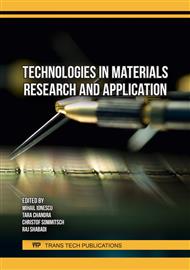p.103
p.109
p.117
p.123
p.129
p.135
p.153
p.161
p.167
From Material Requirements to the Rolling Schedule - Fast Material-Oriented Roll Pass Design for Long Products with the Open Source Framework PyRolL
Abstract:
New groove pass series for long products must be developed by backward engineering starting with the necessary mechanical properties and geometry of the final shape, with a highly iterative manual effort and with numerous manual decisions. Usually, established groove sequences are adopted in this process without consideration of material requirements of the rolled materials and work roll limitations, while other groove shapes may provide better final results. In order to achieve precision in the material flow, time-consuming FE-Methods are already being used in the reverse engineering. The aim of the presented fast approach is to obtain an optimal roll contour for simple irregular groove sequences using generalized, roll-technical justified and experimentally evaluated design criteria coupled with a fast 3D approach for stress state, material flow and fast approaches for the assessment of the elastic stress state resp. work safety of the rolls. By direct coupling the material flow calculation e.g. with fast microstructure models the microstructure development and the required end properties are integrated into the optimization process. Parts of the calculation code discussed are available via the open source project PyRolL which is continuously updated by the Center of Groove Pass Design of TU Bergakademie Freiberg and free available within the terms of the BSD-3-Clause License [1]. The Python-based framework allows maximum adaptability to own needs via a flexible plugin system for inclusion of own models and routines.
Info:
Periodical:
Pages:
129-134
Citation:
Online since:
December 2023
Authors:
Price:
Сopyright:
© 2023 Trans Tech Publications Ltd. All Rights Reserved
Share:
Citation:



